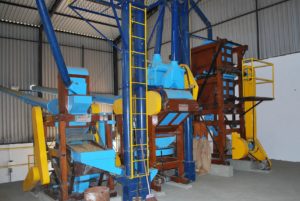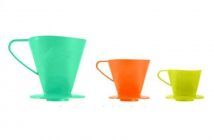Machines from Pinhalense are exported to the main coffee producing countries
With the exponential growth of Brazilian special coffee exports, the activities of the agricultural equipment plant for the coffee plantations are heated. Pinhalense, founded in 1950 by six friends of Italian descent, residents of the city of Espírito Santo do Pinhal, SP, has seen sales increase both in the domestic market and also in Brazil’s competing coffee producing countries, such as Vietnam, Colombia, South Africa, Costa Rica, Kenya and Ethiopia.
Its importance in the specialty coffee market in Brazil is such that the company played a key role in the creation and diffusion of the peeled cherry system, which today accounts for five to seven million bags of coffee in Brazil, and which led to the inclusion of Brazilian coffee in the stock market of New York.
The name peeled cherry was created by the company and the system is currently used in many other countries, especially in Latin America and Central America, where it is also known as Honey Processed. CD had and has a high positive impact on the quality and price of Brazilian coffees and supported the change in the image of the country’s coffees in the world market.
The company has a niche of machines focused on the production of specialty coffees. Recently, at the last Global Specialty Coffee Expo 2017, held in Seattle, USA, they launched Eco Super, a zero water consumption pulping machine, which won the fair’s product of the year award. Costing between R$ 27 and R$ 30 thousand, Pinhalense sells approximately 90 units in Brazil, especially for farms producing special coffees.
The First Machines
At first, the machines were made of wood and steam powered or, in some rare cases, electric motors. “We were more of a carpentry than a metallurgical company”, says commercial manager of Pinhalense, José Fábio Raimundo Filho. They are now made of steel and use much more sophisticated electric engines.

They have three units that, together, add up to 80 thousand square meters of built area. Soon, they will be joining a single industrial complex. “We are awaiting a decision from both the Federal Government and the city council regarding a terrain we are seeking,” explains Pinhalense commercial manager, José Fábio Raimundo Filho.
The production line will also undergo major transformations in the coming years, as the company has hired a consulting firm specialized in floor layout to modernize it and make it more efficient”, says the engineer..
Although the coffee segment accounts for about 80% of all its revenues, Pinhalense also markets equipment for segments such as grains, cocoa and nuts. They are divided into three lines – mechanization, post-harvest, wet and dry way, and re-benefit.
X-ray
- Founded in: 1950, in Espírito Santo do Pinhal, SP
- 700 employees
- 3 manufacturing parks with 80 thousand square meters of built area
- Revenue in 2016: US$ 180 million, representing 50% domestic market share and 30% foreign market
- They export to more than 100 countries



